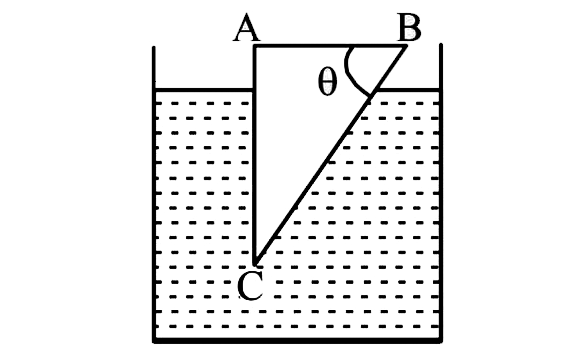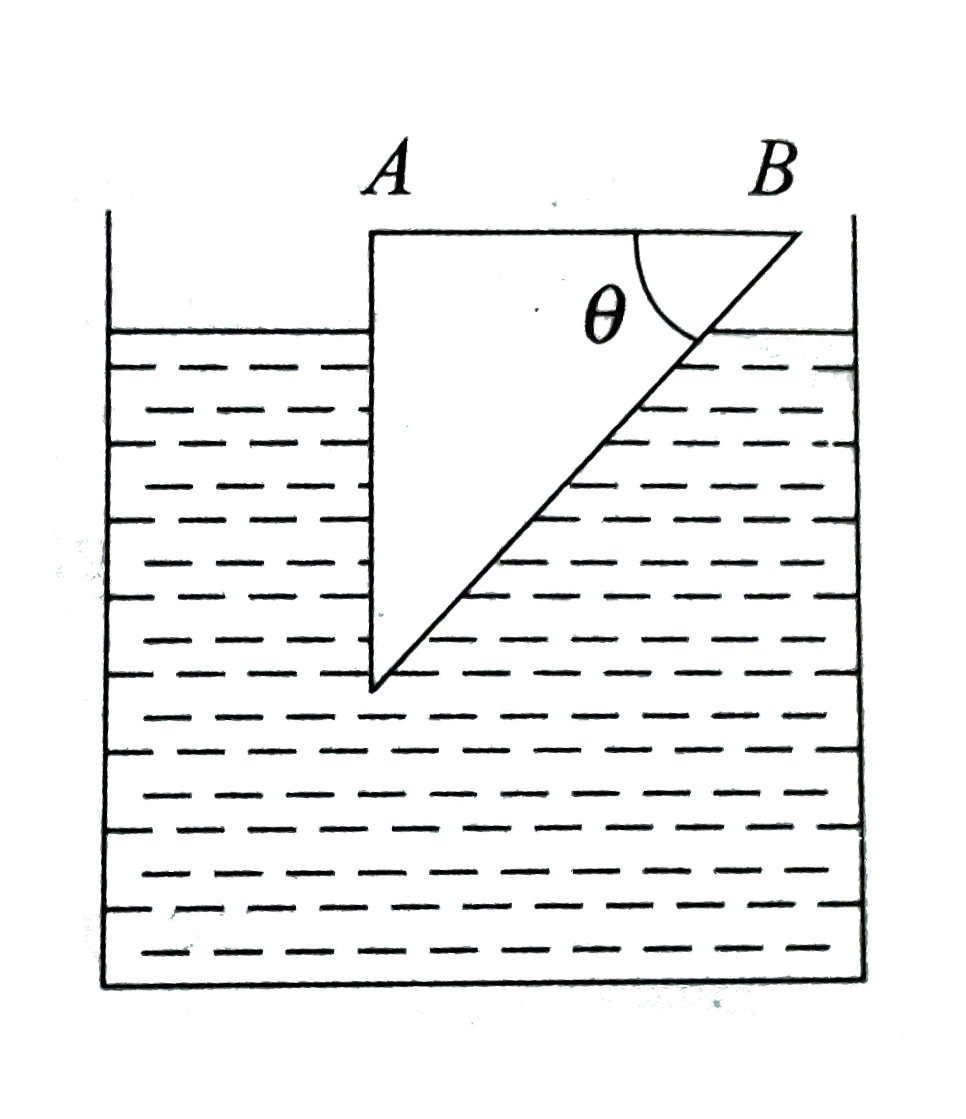A glass prism (μ=1.5) is dipped in water (μ=4/3) as shown in figure. A light ray is incident normally on the surface AB . It reaches the surface BC after totally reflected, if

sinθ≥8/9
2/3<sinθ<8/9
sinθ≤2/3
it is not possible
The correct Answer is:A
For TIR at face AC
θ≥ic

⇒ sinθ≥sinic
⇒ sinθ≥1ngw
⇒ sinθ≥nwng⇒sinθ≥89 .
Topper's Solved these Questions
- RAY OPTICSBOOK - ERRORLESSCHAPTER - RAY OPTICSEXERCISE - NCERT BASED QUESTIONS ( Refraction at Curved surface )
61 Videos
- RAY OPTICSBOOK - ERRORLESSCHAPTER - RAY OPTICSEXERCISE - NCERT BASED QUESTIONS ( Prism Theory & Dispersion of Light )
46 Videos
- RAY OPTICSBOOK - ERRORLESSCHAPTER - RAY OPTICSEXERCISE - NCERT BASED QUESTIONS (Refraction of Light at Plane Surfaces)
48 Videos
- MAGNETISMBOOK - ERRORLESSCHAPTER - MAGNETISMEXERCISE - Assertion and Reason
22 Videos
- WAVE OPTICS AND ELECTROMAGNETIC THEORYBOOK - ERRORLESSCHAPTER - WAVE OPTICS AND ELECTROMAGNETIC THEORYEXERCISE - ASSERTION & REASON
27 Videos
Similar Questions
A glass prims ABC (refractive index 1.5) , immersed in water (refrective index 43). A ray of light is incident normally one face AB. If it is totally reflected at the face AC, then

View SolutionA ray of light is incident on the surface of water. For what angle, the ray will undergo total internal reflection ?
View Solution
Knowledge Check
A glass prism is immeresed in water as shown in the figure. When a beam of light incident is incident normally on the face ab, it is internally reflected at the face ad. If the refractive index of glass is 1.5 and that of water is 4/3, then
 Asinθ<(2/3)Bsinθ>(8/9)C(2/3)<sinθ<(8/9)DNone of these
Asinθ<(2/3)Bsinθ>(8/9)C(2/3)<sinθ<(8/9)DNone of theseChoose the most appropriate option.
A glass prism ABC (refractive index 1.5), immersed in water (refractive index 4/3). A ray of light is incidentally normally on face AB. If it is totally reflected at face AC, then
 A40%B50%C65.6%D34.4%
A40%B50%C65.6%D34.4%A glass prism of refractive index 1.5 is immersed in water (refractive index 4/3). A light beam incident normally on the face AB is totally reflected to reach on the face BC if
 Asinθ≥89B23<sinθ<89C12<sinθ<89DNone of these
Asinθ≥89B23<sinθ<89C12<sinθ<89DNone of these
Figure shows a glass (μg=1.5) vessel, partly filled with water (μw=43) . A ray of light is incident normally on the water surface and passes straight through. The vessel is tilted slowly till angle θ such that the light ray is emergent grazing the lower surface of the glass. Find θ.

View SolutionA glass prism of refractive index 1.5 is immersed in water (refractive index 4/3). A light beam incident normally on the face AB is totally reflected to reach on the face BC if.

View SolutionA glass prism of refractive index 1.5 is immersed in water (refractive index 4/3). A light beam incident normally on the face AB is totally reflected to reach the face BC, Fig. if :
 .
.
View SolutionA glass prism of refractive index 1.5 is immersed in water (refractive index 4/3) . A light beam normally on the face AB is totally reflected to reach on the face BC if

View SolutionWhen a ray of light is incident normally on one refracting surface of an equilateral prism of refractive index 1.5, then
View Solution
